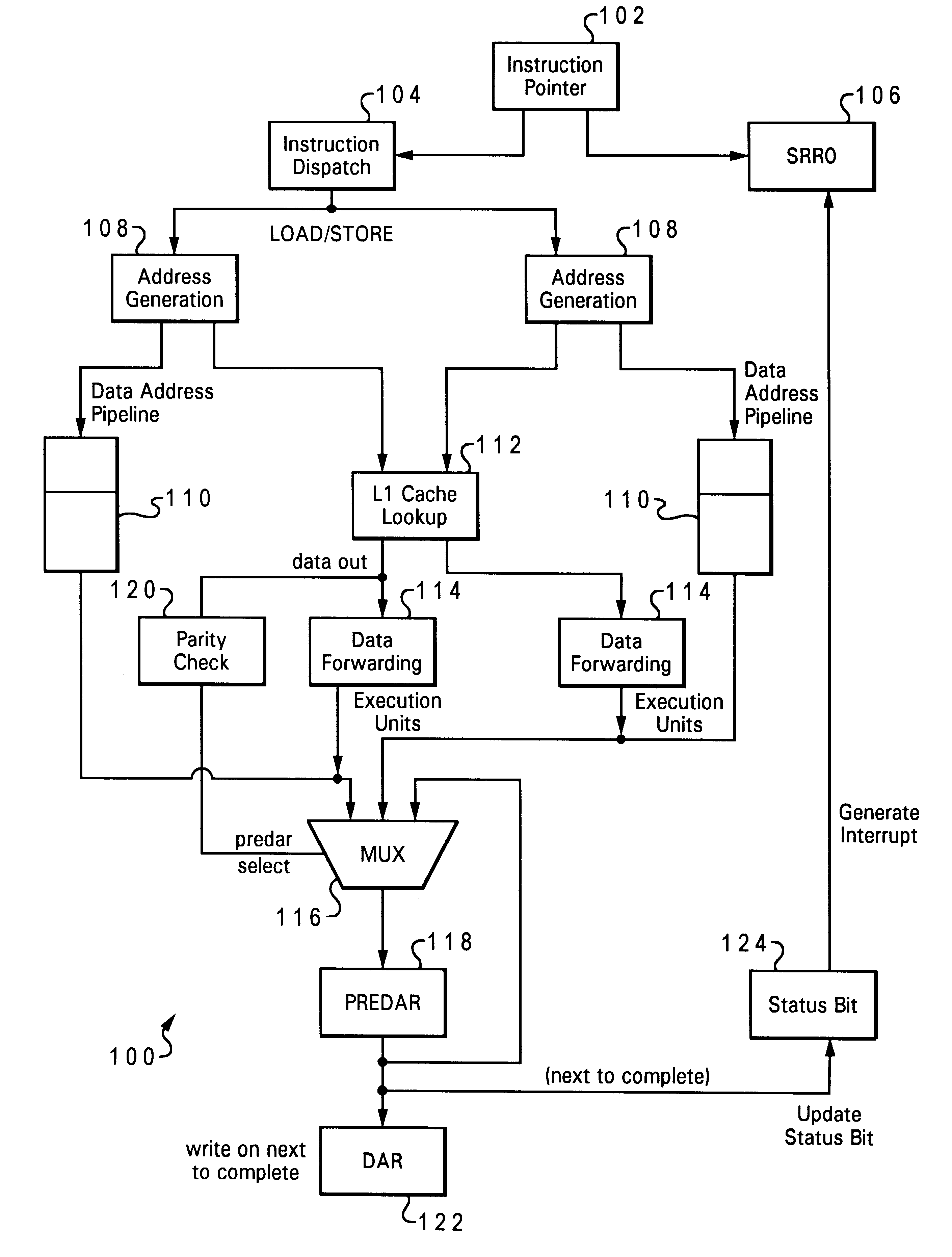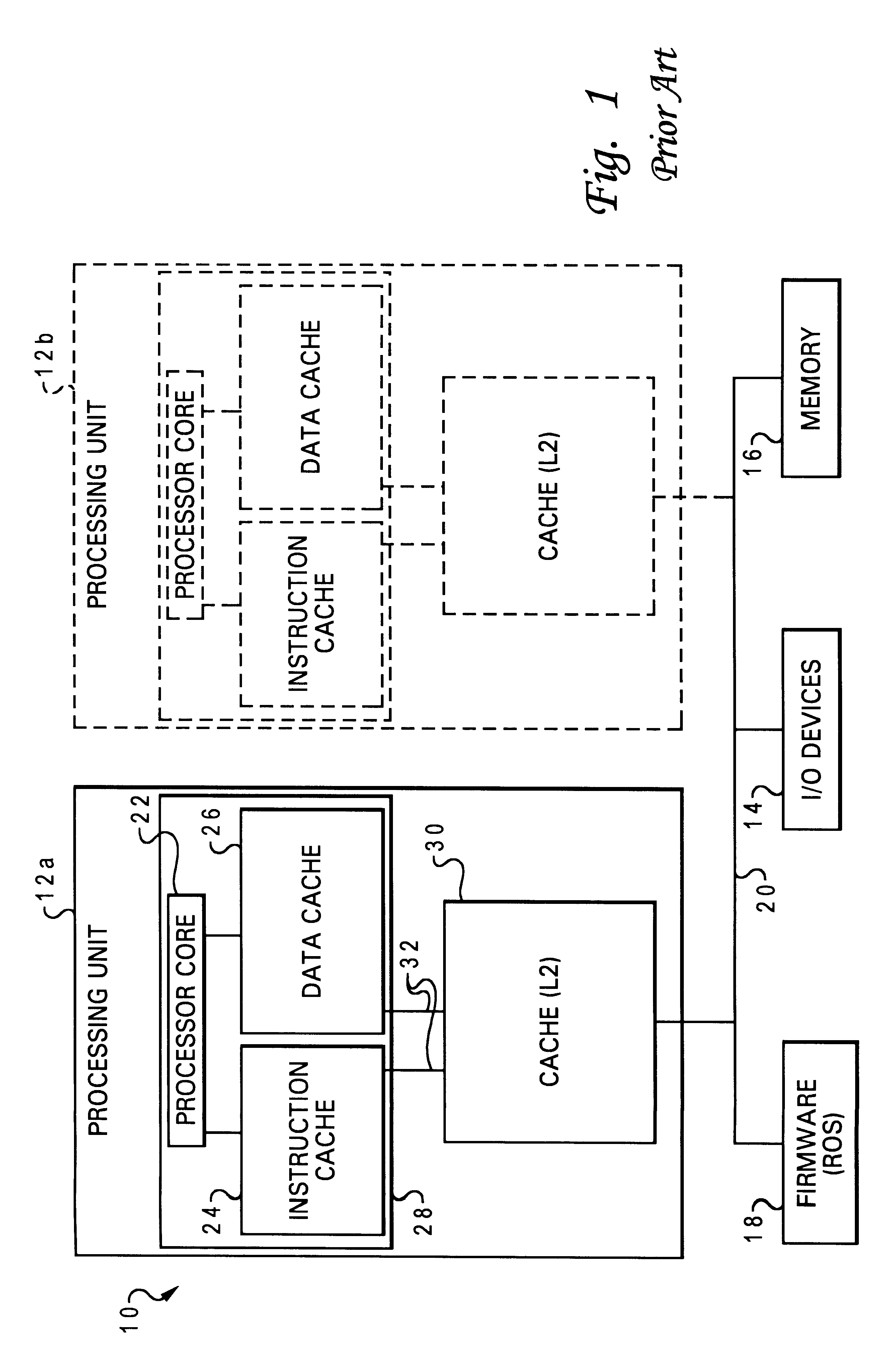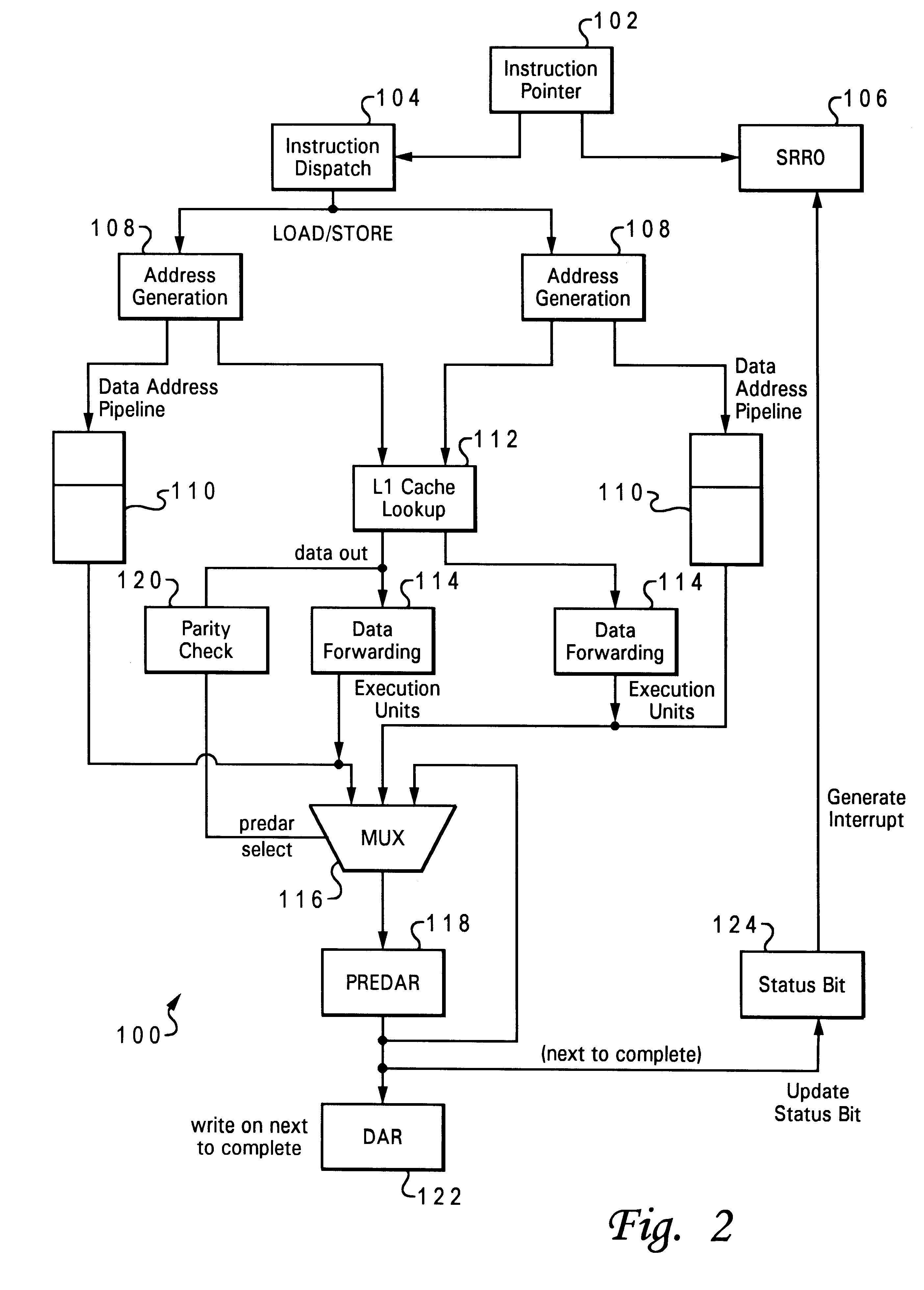Recovery mechanism for L1 data cache parity errors
a parity error and recovery mechanism technology, applied in the field of computer systems, can solve the problems of single-bit errors, incorrect bits in fields, and no mechanism to enable the computer's operating system
- Summary
- Abstract
- Description
- Claims
- Application Information
AI Technical Summary
Problems solved by technology
Method used
Image
Examples
Embodiment Construction
The present invention is directed to a method of allowing software recovery from detected cache errors. In the implementation described below, the invention provides a mechanism for making L1 data parity errors, which arise from load instructions, visible to a computer's operating system, such as the AIX operating system (AIX is a trademark of IBM). Software recovery is enabled by simulating an interrupt, particularly, a data storage interrupt (DSI), in response to an L1 parity error for the instruction.
Interrupts are used in computers to allow a wide variety of devices to obtain the attention of the computer processor, in order to request services, or report problems. When a processor receives an interrupt, it usually suspends its current operations, saves the status of its work (the processor "context"), and transfers control to a special routine known as an interrupt handler. The interrupt handler contains instructions for dealing with the particular condition that caused the int...
PUM
 Login to View More
Login to View More Abstract
Description
Claims
Application Information
 Login to View More
Login to View More - R&D
- Intellectual Property
- Life Sciences
- Materials
- Tech Scout
- Unparalleled Data Quality
- Higher Quality Content
- 60% Fewer Hallucinations
Browse by: Latest US Patents, China's latest patents, Technical Efficacy Thesaurus, Application Domain, Technology Topic, Popular Technical Reports.
© 2025 PatSnap. All rights reserved.Legal|Privacy policy|Modern Slavery Act Transparency Statement|Sitemap|About US| Contact US: help@patsnap.com



